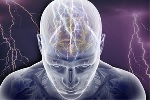What kind of disability group is given with epilepsy
 Epilepsy is a disease of the nervous system in which the brain is affected and, in view of this, seizures occur with seizures. Disease interferes with the conduct of a normal working life. Therefore, the state helps such patients through subsidies. There are three groups of disabilities in epilepsy, which are assigned to the patient by a medical and labor commission.
Epilepsy is a disease of the nervous system in which the brain is affected and, in view of this, seizures occur with seizures. Disease interferes with the conduct of a normal working life. Therefore, the state helps such patients through subsidies. There are three groups of disabilities in epilepsy, which are assigned to the patient by a medical and labor commission.
How do you assign a disability group?
Is disability given epilepsy? With epilepsy, it is possible not only convulsive seizures with salivation in the form of foam, but also acute psychoses that can prevent people working with this patient. Epilepsy is a disability or not? The disease limits the ability to work, so depending on the degree of these restrictions, disability is given. Based on the results of the commission, the appropriate group is assigned, according to which the patient has the right to receive a pension of the appropriate size. Not always with this disease give a disability.
With epilepsy, disability exists in three groups:
- Severe. Assigned to severe long seizures, up to unconsciousness in combination with a violation of intelligence.
- Average. Lighter intellect disorders and less severe prolonged seizures.
- Easy. It is characterized by moderate and rare seizures. Working capacity is reduced, but preserved.
In epilepsy, there is a disturbance of the cerebral circulation, which can lead to organic damage and a decrease in the level of intelligence. Mental abilities at their reduction limit the field of professional activity. The brain is affected by chronic hydrocephalus, which accompanies epilepsy. In the absence of treatment, the volume of the brain can decrease, which affects both intellectual and mental deviations.
Frequent seizures make working life impossible, so a person needs state assistance in the form of a subsidy - a disability pension.
 Everything you need to know about temporal and frontal epilepsy: symptoms, diagnosis and treatment.
Everything you need to know about temporal and frontal epilepsy: symptoms, diagnosis and treatment.
Learn about alcohol epilepsy: manifestations, principles of treatment and care.
To assign a disability for epilepsy and a group of incapacity for work it is necessary to undergo a complete examination, including blood tests, including biochemical for urea. The list of studies also includes radiography of the skull, CT and MRI.Electroencephalography and ultrasound of the brain are also necessary to establish intracranial hypertension. There is also an examination of the condition of the fundus in the ophthalmologist.
For a medical and social assessment, a neurologist is given a referral in the form 088 / a-06 for assigning a disability group. ITU verifies the presence of the disease, as well as its severity for determining the degree of disability.
Documents received by the expert commission should be stamped and signed by the chief doctor of the polyclinic. The assignment of a disability after a medical examination is documented on the certificate. In addition to the survey, an individual rehabilitation plan for the patient is developed, which is sent to the social protection authorities for its implementation. With the documents received after the medical examination, the patient must appear in the organization of social protection.
With epilepsy, disability is given for several years, and for an unlimited period. Unlimited epilepticism is prescribed for patients with epilepsy of the second and the first groups, whose anticonvulsant treatment was not effective and there is a persistent loss of working capacity.
Important! To confirm the diagnosis at the ITU, one must bring the conclusion of the electroencephalogram and its result. EEG in epilepsy is carried out regularly to assess the dynamics of changes.
Tomography of the brain shows organic disorders that develop in episyndrome. Perhaps, the syndrome and convulsive readiness of the brain causes the presence in it of cysts or tumors that violate the activity of nearby neurons. A repeated MRI scan is performed after several months - 3, 6, a year or 5-10 years.
Disease deals with a neurologist-epileptologist who collects an anamnesis of the disease. When conducting a medical and social examination, the time of onset of the disease is established. The type of seizures is established: small, large, as well as the frequency and duration of seizures.
The performed treatment and reaction to it are recorded: with or without improvements. Whether the patient is taking the prescribed treatment or ignoring the doctor's prescriptions( an analysis is made for the content of antiepileptic drugs in the blood).The documents also indicate the existence and extent of intellectual and mental disorders.
The medico-social examination documentation specifies the type of seizures:
- absences;
- partial( complex, with secondary generalization);
- atonic;
- is clonic;
- generalized;
- myoclonic;
- tonic-clonic.
 The frequency of seizures is recorded: the number of times a month or a year. Characterized by the seizures themselves: the presence of paralysis in this case, strabismus, unconsciousness, hypertension of the muscles, ataxia.
The frequency of seizures is recorded: the number of times a month or a year. Characterized by the seizures themselves: the presence of paralysis in this case, strabismus, unconsciousness, hypertension of the muscles, ataxia.
The cause of the disease and the appearance of epileptogenic foci is indicated: symptomatic epilepsy, cryptogenic or idiopathic. A check of cognitive and mental functions is carried out in order to establish the degree of the patient's working capacity.
Risk assessment is also assessed:
- Epileptic seizures without an aura are dangerous due to a sudden drop that is difficult to prevent. It can cause injuries.
- Polymorphism of seizures: sensory, motor seizures.
- Early onset of the disease.
- Frequent seizures.
- Structural changes in the skull and brain: finger-like impressions on the radiograph and enlargement of the ventricles of the brain.
- Resistance to anticonvulsants.
 Find out if you can get the right with epilepsy and when you will be denied.
Find out if you can get the right with epilepsy and when you will be denied.
Read what causes epilepsy in children and how to help the baby cope with the disease without consequences?
The nature of the epileptic lesion of the nervous system: congenital, acquired.
Evaluation of ITU
The ITU evaluates the patient's mental and statistical functions:
- In the third group of disabilities, there are vegetative disorders: headaches, sweating, increased irritability in response to noises and bright light. Working capacity decreases. Attacks are rare and short. The frequency of epileptic seizures is about 2-3 times a month, the epistatus is 1 time in 4-6 months. During the day, focal seizures are possible in a conscious state - about 3-4 times a day. Mental seizures happen with a frequency of about 1 time in three months.
- The second group: complaints about depressive disorders, asthenic syndrome. Epileptic seizures occur at a frequency of 4 times a month. Epistatus - once or more in 2-3 months. Psychomotor seizures - about a time or more per month. Focal seizures - about 5 per day.
- The first group: deep disorders of social adaptation and intellectual function, hallucinations, apathy, lethargy, hypotonia of muscles. The patient needs help in life and content.
Epilepsy, a disability and group of which must be established by medical and social expertise, needs treatment, and patients in social protection provided by the state.
write the question in the form below:



